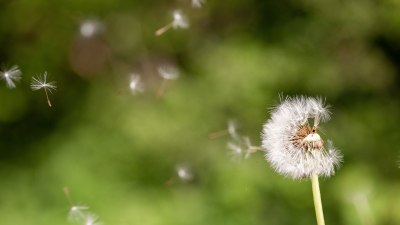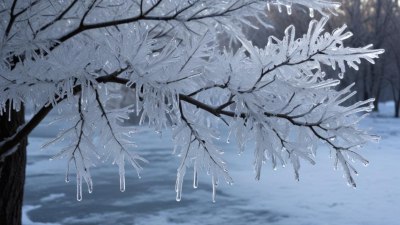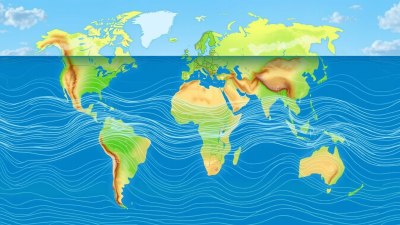Why Pollen Is the Most Passive-Aggressive Force in Nature
Explore the intriguing nature of pollen and its dual role in ecosystems, revealing why it's considered passive-aggressive.

Pollen is often seen as a simple and benign element of the natural world, an essential component of plant reproduction that facilitates the growth of flowers and fruits. Yet, lurking beneath this seemingly innocuous exterior is a complex and multifaceted force that can be viewed as both beneficial and detrimental. In this article, we delve into the paradox of pollen, exploring its dual nature and why it might be considered the most passive-aggressive force in nature.
To understand this, we first need to define what pollen is. Pollen consists of tiny, powdery grains produced by flowering plants, containing the male gametes necessary for fertilization. Its role in the ecosystem is primarily positive, as it supports plant reproduction and ultimately contributes to food production. However, pollen’s existence is often accompanied by a plethora of side effects, leading to the classification of pollen as passive-aggressive.
The Pollination Process
The pollination process showcases the complexity of pollen. When pollen grains from the male part of a flower (the anther) are transferred to the female part (the stigma), fertilization can occur, leading to seed and fruit development. This process is vital for the continuation of many plant species and, by extension, the survival of numerous animals, including humans who rely on these plants for food.
Pollen as a Double-Edged Sword
While pollen serves this critical function, it can also expose the fragility of ecosystems. The sheer volume of pollen produced by many plants is staggering; a single oak tree can produce millions of pollen grains in a season. This massive release can lead to an abundance of food for pollinators like bees, butterflies, and other insects, but it can also create a suffocating environment for those who are allergic to it.
Allergies to pollen are among the most common types of allergies worldwide. Hay fever, or allergic rhinitis, affects millions of people each year. Symptoms can include sneezing, runny noses, itchy eyes, and in severe cases, asthma. This duality of pollen as both a life-sustaining entity and a health hazard epitomizes its passive-aggressive nature. It gives life but also brings discomfort, showcasing a push-pull dynamic inherent in nature.
Ecological Impact of Pollen
Pollen doesn’t just affect humans; it has an extensive ecological impact. The survival of many species depends on availability of food sources, which are directly tied to pollen distribution. Changes in flowering times and pollen availability due to climate change can create mismatches in the timing of plant and pollinator life cycles, causing declines in bird populations, bee colonies, and other creatures that rely on specific plants for survival.
This change can be particularly detrimental for plants that depend on specific pollinators, creating feedback loops that can cascade through ecosystems. For example, if a plant species flowers earlier than its primary pollinator emerges due to temperature fluctuations, the plant may fail to reproduce effectively. This is a stark illustration of how pollen can subtly disrupt ecological harmony while continuing to serve its reproductive function—again highlighting its passive-aggressive nature.
Pollen and Biodiversity
Pollen is also critical in maintaining biodiversity. Diverse pollen sources are essential for sustaining varied ecosystems. The decline in one type of plant can lead to diminished pollen availability, impacting not just individual species but entire habitats. Maintaining high levels of biodiversity ensures a robust ecological buffer against pests and diseases, and pollen plays a key role in fostering this diversity.
The interplay of various plant species through pollen transfer showcases a delicate balance. Where one species flourishes, another may wane; this constant push and pull can create an environment where only the most adaptable thrive. Consequently, pollen can be seen as a catalyst for evolutionary change, nurturing competition and cooperation among various species. This defines another layer of its passive-aggressive character—promoting diversity while also facilitating competition.
Human Intervention and Its Consequences
Humans have long manipulated plants through agriculture, inadvertently altering their pollen characteristics. Selective breeding has led to crops that produce large amounts of pollen, often designed to maximize yields but disregarding ecological consequences. This is where pollen's passive-aggressive nature can have dire impacts, as these heavy-pollen types can outcompete native plants, leading to biodiversity loss and disruption of local ecosystems.
As modern agricultural practices intensify, the rise of monoculture farming exacerbates these problems. When vast stretches of land are planted with a single crop, the availability of diverse pollen sources diminishes, threatening not just local flora but also the entire fauna that relies on that diversity. This creates a cycle of dependency that can easily collapse, illustrating how human actions can amplify pollen's paradoxical characteristics.
Pollution and Pollen
Pollen’s passive-aggressive nature is further complicated by environmental pollution. Airborne pollutants can interact with pollen grains, leading to changes in their allergenic properties. Exposure to particulate matter can make pollen more inflammatory when inhaled, worsening allergic reactions and increasing health risks.
This pollution effect introduces a layer of irony: while pollen is crucial in supporting life, it can concurrently be a vector for health issues exacerbated by human activity. Instead of being a mere facilitator of plant reproduction, pollen can also act as an indicator of ecological health, illustrating the interconnectedness of all aspects of the environment.
Future Considerations
As we consider the future of pollen within the context of climate change, biodiversity loss, and urbanization, it becomes clear that understanding its complex role is vital. Research focused on pollen dispersal mechanisms and interactions with the environment is essential for predicting the long-term impacts of changes that may be irreversible. This research will help in developing strategies to mitigate the adverse effects of pollen on human health while maximizing its ecological benefits.
Preserving biodiversity and employing sustainable agricultural practices will become increasingly crucial. By balancing agricultural needs with natural ecosystems, we can begin to appreciate the importance of pollen without falling victim to its passive-aggressive tendencies.
In conclusion, pollen is more than just a simple byproduct of plant reproduction; it is a complex entity that embodies a dichotomy of effects. Representing both life-giving potential and health risk, it pushes boundaries within ecosystems and challenges human interactions with nature. The investigation of its elusive characteristics reveals why pollen can be viewed as one of the most passive-aggressive forces in nature, serving as a reminder of the intricate interconnections in the natural world.











